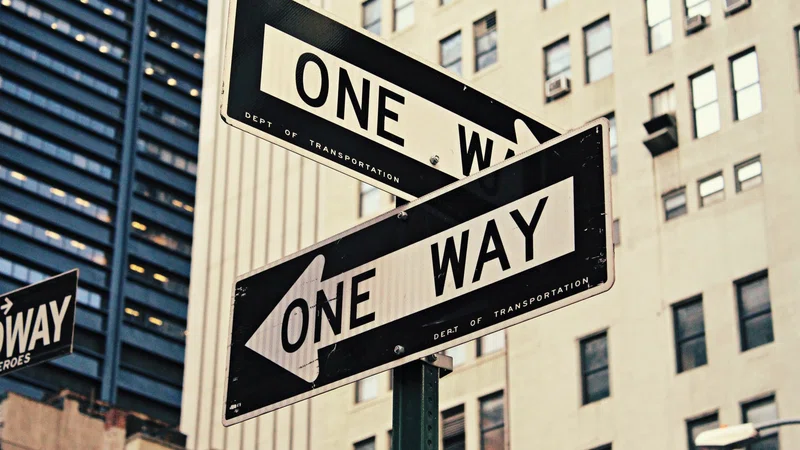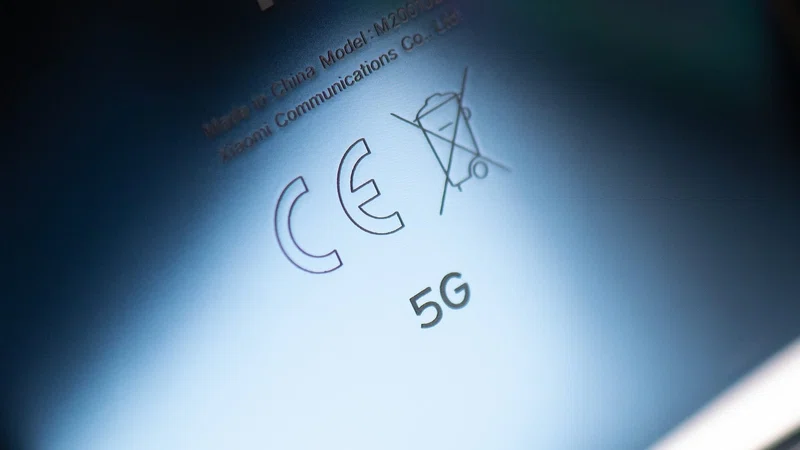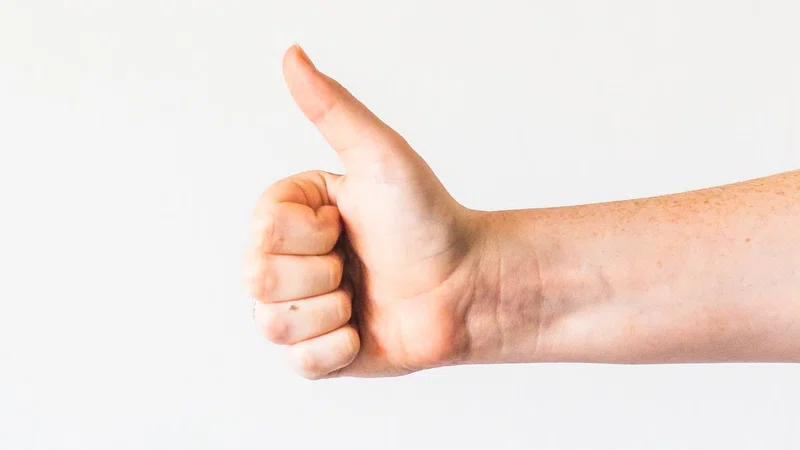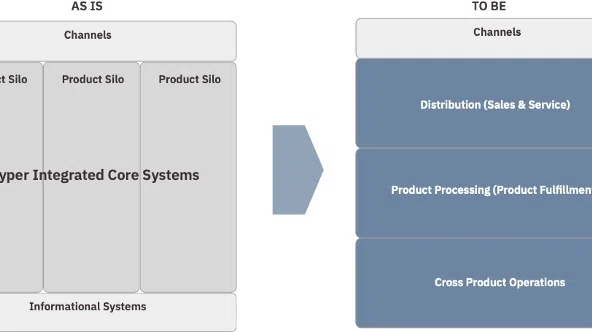I expand on some of these ideas in my book, The Cryptocurrency Revolution, which is available here and from other booksellers, online and offline.
The past is a foreign country: they do things differently there. Technology years are like dog years — and this is even more the case with blockchain tech, where one year can sometimes feel more like 10.
While anyone who works in blockchain development is used to the idea of pivoting their business strategies and iterating over their code base to take advantage of changes so rapid they make JavaScript frameworks look slow to evolve, it also means that articles and blog posts that were written several years ago have not necessarily aged well.
In October 2016 I wrote this Medium post, which summarised 30 use cases for blockchains which were hitting the headlines at the time. Several people have suggested recently that I should revisit this and see which ideas have been progressed, and which have fallen by the wayside.
It seems like a good idea, as the original post is still getting a fair bit of traction and some of these examples could do with a reality check
2016 already feels like ancient history. While it pre-dated ICO fever and the huge price rises that marked out 2017 as an extraordinary year for anyone interested in cryptocurrency and the token economy, it was a year of great excitement, when pretty much everyone got carried along by a wave of enthusiasm, feeling that we were on the cusp of something that could change our worlds.
It was a time when banks faithfully repeated the mantra ‘Blockchain, not Bitcoin’, and also a time when enthusiasts were prepared to gloss over scalability problems, especially with Ethereum.
In 2019, I believe we are now seeing the bigger picture. It has been more than 10 years since the first Bitcoins were mined, and the fact that this open-source, distributed public data structure, accessible to all, has not been hacked and can reliably transmit millions of dollars across the world with a transaction fee of cents, is remarkable.
We are now well and truly in the blockchain Trough of Disillusionment, according to Gartner’s famous model, but I would argue that there are more than enough reasons to be optimistic.
For reasons I explain here, I feel that the long-term trend is towards decentralisation and transparency, rather than walled gardens, and that the so-called private blockchains being advocated today are an interim step towards a future where data will be open and distributed.
In the Nineties, most legacy corporations were suspicious about the Internet and focused their efforts on building elaborate intranets instead and we see a parallel trend today, with many enterprises trying to fit new technologies to old business models rather than dream whole new worlds into existence.
The likely scenario, at least in the medium term, is that we will see a mixture of private and public ledgers, in many cases linked by the various interoperability solutions that are now being developed, while public blockchains will continue to see new applications developed on top of secondary layers.
I’ll look forward to doing an update in 2022. In the meantime, here’s my redux list of 30 different uses for blockchains in 2019:
1) Transfer money
Bitcoin celebrated its tenth birthday in January, confounding all the naysayers who were sceptical that a decentralised and permissionless network could survive and even thrive. With a $70 billion market cap, the Bitcoin network is the fastest, cheapest way to transfer money around the world, regardless of whether you are a millionaire or a market trader. In late 2017, with the price accelerating towards $20,000, the world’s largest cryptocurrency was rarely out of the headlines, but as prices have stabilised and the furore died down, building has continued. Moving certain types of small transactions on to second-layer solutions such as Lightning is just one possible way to solve scaling issues, while legacy financial companies are introducing crypto solutions to meet market demand, such as Fidelity Digital’s Bitcoin service. The ‘blockchain not Bitcoin’ narrative favoured by banks two years ago appears to be fading away. Read more about using Bitcoin here.
2) Make micropayments
More than ten years after Bitcoin’s first birthday, the idea of using blockchains to record the kind of tiny payments that are impossible via the legacy banking system has gathered pace. The Bitcoin blockchain offers unparallelled security for the price of its transaction fees, but there has been a realization that in most cases it is overkill to require this level of certainty for tiny transactions. Automated micropayments using a token native to a particular network are something which are useful for a variety of use cases, from the Internet of Things to content monetisation, both discussed in more detail below. The question remains whether these purposes are best served with a dedicated high-volume network which sacrifices settlement finality for speed, or if they should be delegated to an off-chain solution. The Lightning Network is discussed in more detail here https://en.wikipedia.org/wiki/Lightning_Network
3) Lend people money
The bear market of 2018 and (so far) 2019 has separated the traders and speculators from the HODLers, and there seem to be enough people who are so determined to hang on to their digital assets through fair times and foul to sustain a new wave of loan companies who will allow borrowers to raise fiat against their crypto collateral. Probably the best-known are https://saltlending.com/ and EthLend.
4) Pay your parking fines
In 2014, a New York City councilman proposed that the city authorities should accept Bitcoin in payment for parking fines. As far as anyone knows, this never went ahead. But last year, it emerged that recalcitrant motorists in South Africa can now pay for traffic violations with cryptocurrency, so this is an idea that has clearly not disappeared. Additionally, while NY may have gone cold on the idea of accepting BTC, city authorities have shown they are not averse to investigating blockchain for other use cases. See point 8, below, for an update on the Brooklyn Microgrid story.
5) Consume content
Startups such as SatoshiPay and Smoogs sprang up in the days when Bitcoin transaction fees were tiny and micropayments on the main blockchain made sense, no matter how small you wanted your transaction to be. There is a huge opportunity for independent content producers to monetise writing, music or videos by allowing consumers to buy in commitment-free small increments: a paragraph of text, or a minute of video. Higher Bitcoin TX fees do not mean this use case has disappeared, and companies have pivoted accordingly. SatoshiPay now use Stellar, for example, and we have also seen the emergence of the Brave browser, incorporating payments with its native BAT token.
6) Charge an electric car
German utility company RWE may have blazed a trail by being the first to install blockchain-powered car charging stations, back in 2016. But the two following years have seen decisive movement by the world’s largest automotive manufacturers towards establishing blockchain-based incentive and data networks. Whether these are powered by startups such as Xain or Dovu, or are developed in-house, one only has to look at the list of names signed up to the Mobi initiative to realise things are moving fast — and car charging stations will be only a small part of the big picture. Read my previous post here to get a idea of some of the possibilities.
7) Certify a supply chain
Blockchain for supply chain verification is one of the areas that has seen major investment over the last couple of years. Where Provenance pioneered, so the established corporates have followed, and perhaps it is no surprise that managed blockchain solutions are being used — at least so far. Deloitte and SAP are among providers who now offer off-the-shelf solutions for wholesalers and end buyers along the acquisition chain to verify exactly where, when and how ingredients for food, pharmaceuticals and industry were produced. Whether this movement to managed (permissioned) systems will eventually move back towards the trustlessness and transparency that public blockchains can give depends on the ability of the latter to scale, and also the ability of management within legacy companies to grasp new business models and paradigms.
8) Share electricity with the neighbours
It should be the easiest thing in the world to do. Take one street that has a sunny side and a shady side. The lucky people on the sunny side of the street have solar panels on their roof. It’s more efficient to use electricity close to where it is generated, so instead of selling the excess power back to the grid (which most networked domestic solar installations do), imagine if the owners of the houses with excess power could sell it on the local market. This would normally come at a cost, with the homeowners having to agree a price among each other and monitor the amount of electricity being used. The MicroGrid project in New York’s Brooklyn solves this requirement by allowing the households to buy and sell energy via smart contracts on the Ethereum blockchain, while the Australian startup PowerLedger works in a similar way, No independent calculation or monitoring required. In a parallel workstream, startups such as Electron use blockchain technology to reduce friction in the electricity market, acknowledging that most people are unlikely to generate their own power at least in the short term, but levelling the playing field between large and smaller-scale providers.
9) Prove your identity
In a world where our data seems to be up for sale to the highest bidder, and where companies can get hacked and lose data which people did not even realise they held, such as in the Equifax hack, there is a greater need than ever for a self-sovereign identity system which allows individuals to prove to an organisation that they are who they say they are, without giving up all the personal data that traditional KYC (Know Your Customer) processes normally demand. Scores of organisations, from startups to the largest of legacy companies, are working on these projects, but probably the best-known are Deloitte’s Smart ID https://www.deloitte.co.uk/smartid/ and uPort, who are backed by Consensys.
10) Let your household appliances pay for things
IBM’s ADEPT [Autonomous Decentralized Peer-to-Peer Telemetry] research project was one of the first blockchain/IoT proposals, way back in 2015. But allowing household appliances to control their own identities and budgets is only one way blockchain technology can be used in smart homes: there are several projects focused on allowing the secure granting and revocation of access permissions to household devices, using smart contracts. For example, you may wish to grant your neighbour access via a smart lock for an hour per day, if you have asked them to feed your cat. Or you may wish to grant a guest temporary wifi access without revealing your password. Do any of these things actually require a blockchain? Possibly not, but it is interesting to see how the technology might fit into the mix. Further examples can be found in this paper by Ali Dorri, Salil S. Kanhere, and Raja Jurdak: https://arxiv.org/ftp/arxiv/papers/1608/1608.05187.pdf
11) Prove ownership of an asset
In the real world, goods cross national borders every day. Some items are subject to national registers of ownership (cars, racehorses, diamonds), whereas other transactions go unrecorded other than via a paper receipt. Recording these transactions on a blockchain can help prove irrefutably that the person in physical possession of the object is the rightful owner, and can in the case of artworks or antiques, where provenance is important, demonstrate that the chain of custody has been unbroken.
Some assets are easier to identify than others: how do you know, for example, that a luxury handbag is the one that was stolen from a particular person? NFC tags or beacons can be destroyed, and labels cut out. Wine can be removed from a bottle and the seal replaced. These are not problems with blockchain technology, simply challenges with the way the physical asset is linked with its digital presence. Assets which have unique properties are therefore easier to authenticate: EverLedger uses the physical attributes of a diamond to assert its provenance, while ownership platforms such as TEND can use the DNA of a racehorse to identify a particular animal.
12) Issue shares
The idea that any kind of traditional financial asset can be tokenised is a compelling narrative, and has led to much excitement around the idea of security tokens (STOs) as a more regulatory-friendly alternative to ICOs. However, within the general category of ‘shares on the blockchain’, there are different use cases.
In December 2016, Overstock closed the first Series A preferred funding round to be conducted on a blockchain, consisting of 126,565 shares sold on the tØ blockchain platform for $15.68. $1.9m was raised via shares traded on the tØ blockchain platform developed by Overstock.com subsidiary Medici.
And in June last year, Aboveboard became the first company to distribute stock from a Delaware corporation on a public blockchain when it allocated ERC20 tokens representing its stock directly to the Ethereum accounts of its employees.
Nasdaq and the London Stock Exchange have both participated in projects to provide a platform to issue and manage shares of small and medium-sized enterprises.
13) Execute an equity swap
Enterprise blockchain technology firm Axoni successfully concluded a two-phase pilot at the end of 2017 which managed equity swap transactions and related post-trade lifecycle events between 11 of the world’s largest banks. As claimed here, this synchronization of data, increased transparency of calculation logic and automation of corporate actions processing will reduce operational costs and errors and allow real-time data access for both client and regulatory reporting.
Last year, Axoni went on to conclude a successful $36 million Series B funding round, and are continuing their work on AxLang, a new Scala-based programming language which supports functional programming and enables formal verification of smart contracts for Ethereum-compatible networks, among other workstreams.
14) Issue money from a central bank
Government-backed digital currencies are not new. Senegal, Tunisia, the Marshall Islands and, most famously, Venezuela have all issued their own cryptocurrencies, designed to operate alongside their existing money supply. Other countries, including Russia, Japan, Sweden, Estonia and the UK, have investigated the possibility to varying degrees. Of course, while such currencies are designed to share some characteristics with true cryptocurrencies, they are centralised in nature, and their supply and notional value is controlled by the government which issues them. Given that Bitcoin was invented as a challenge to the existing fiat system, they do not fundamentally solve any problems with fiat currencies. Governments considering this should take note: the sad situation in Venezuela has led to a surge in demand for Bitcoin rather than the government-issued Petro. A fiat currency is a fiat currency, regardless of its technical architecture.
15) Smooth the shipping process
With a fully laden container ship generating paperwork that can weigh up to 2kg and tie up hundreds of people in different countries validating transactions between companies and entry requirements into destination countries, allowing a distributed ledger to do the heavy lifting makes sense. It is therefore not surprising that one of the areas in which there has been extensive, well funded R&D is that of international supply chain management. Individual companies have invested in their own blockchains, but the best-known is Tradelens, a collaboration between Maersk and IBM.
16) Authenticate sneakers
The headline-grabbing initiative by California-based startup Chronicled, which sought to prove the authenticity of a range of high-end training shoes produced in honour of Kanye West, may have disappeared into the abyss of history, but Chronicled are alive and kicking — and putting their experiences of footwear authentication to good use with their new projects. These days, Chronicled offer a range of custody chain options validated on blockchains — and are best known for their partnership with MediLedger, which they hope will revolutionize the pharmaceuticals industry.
17) Run a decentralised marketplace
Open Bazaar is widely seen as a successor to Silk Road, but it is far more than that. Silk Road was a website on a server hidden by the Tor network. The FBI was able to track it down, seize the server, and arrest those involved. In contrast, Open Bazaar is a peer-to-peer network like BitTorrent. You can download the software and set up your own storefront. It’s worth mentioning that Open Bazaar does not explicitly endorse selling illegal items. From their FAQ: “Sellers on the OpenBazaar network host their own products and are therefore directly responsible for complying with local laws (and their own conscience) when listing items or services. Users engaged in illicit activity cannot hide behind a third party service.”
18) Register music copyright
Channelling income from music to the artist who created it is a huge global challenge. Often, the administrative costs of recovering royalties exceed the amount due. Friction caused by cumbersome payment processes mean that fans who would otherwise be prepared to pay to consume music end up illegally downloading content, just because it’s easier.
Imogen Heap’s Mycelia project, built on Ethereum, is just one platform whose aim is to provide a fairer way for musicians to monetise their work, while streaming startups such as Hearo.fm offer transparency and a chance for creators to keep up to 90 per cent of the funds they generate, as compared with about 12 per cent under traditional models. However, as with many other areas, legacy organisations are fighting back by using blockchain technology to underpin and streamline their existing models. Sony announced late last year that they had developed their own blockchain-based digital rights management platform, while the Performing Rights Society is reported to be developing a Hyperledger solution.
19) Vote
What could be better for reinforcing trust and transparency in the democratic process than a blockchain, right? Wrong! Whether people are voting at a corporate AGM or for their next government, the words from the wise are to proceed with caution when it comes to any technical innovation. Sure, using the right blockchain in the right way *may* result in data being stored immutably, in such a way that it can be viewed without linking it to the person who voted. But a distributed ledger is only part of a digital voting architecture, and given that these technologies are very much still under development, it seems that sometimes pens and paper are the safer option, at least in the short term. Read this research paper for insight into the type of issues that are being found with e-voting systems, whether or not they are backed by blockchains.
20) Register land rights
In October 2018, the UK’s Land Registry’s digital innovation team announced a research and development project into using a distributed ledger platform for recording property ownership https://www.gov.uk/government/news/hm-land-registry-to-explore-the-benefits-of-blockchain . Corda is their technology of choice so far. India, The Netherlands and Sweden are just some of the other countries researching this area, while Wyoming, Vermont and other American states are also exploring the benefits.
21) Execute a legal contract
Tread carefully. Code is not yet law! Remember this. But there are many ways in which standard legal documents can be encapsulated in code running on top of a public or shared blockchain, programmed to execute certain transactions — such as transferring payment — in response to predefined events. The Global Legal Blockchain Consortium, with more than 150 participating law companies, is seriously looking at different use cases where distributed ledger technology may be useful, from verifying process data to lease management.
22) Run a prediction market
Prediction markets are not a new idea. In their simplest form, they allow individuals or organisations to trade contracts based on the predicted outcome of an event, whether this is a change in the price of a commodity, the result of an election, a weather event or even something trivial such as the colour of a dress a particular celebrity will wear to the Oscars. Think of it as a type of bet. Prediction markets are useful not only for the chance to make money, but also because they can provide market intelligence around, for example, voting intentions or can assist price discovery based on the bets people place around what price an artwork might fetch at auction. Startups such as Augur and Gnosis provide decentralised platforms where anyone can create their own prediction and allow others to make bets on it, without being administered by a central authority.
23) Manage a swarm of robots
It sounds like science fiction, but increasing automation means that all kinds of industries, from farming to manufacturing, are now predicted to rely on large numbers of robotic labour, and there will be a need for agreed standards and solutions for storing and processing the vast amounts of data that will be generated and consumed by billions of connected drones and other devices. Last year, MIT hosted the first Symposium on Blockchain for Robotic Systems: http://blockchainrobotics.org/
24) Manage healthcare records
Healthcare infrastructure is a much-touted area for blockchain initiatives, both for providing a transparent and high-availability platform for medical records, and for assuring the supply chain for pharmaceuticals and medical devices. Many startups such as MedicalChain and organisations such as Deloitte are active in this field. However, as with any type of sensitive personal data where there may later be a need to correct errors or redact confidential information, a blockchain solution is probably not the best choice, and the desired outcome may be better achieved in other ways.
25) Certify students
In a world with a mobile labour force, verifying academic qualifications (which are often needed for work visas) can be a slow and painful process. Vietnamese architect applying for a job in France? Russian developer seeking work in Germany? When universities have to be contacted individually and employer references verified over the phone or email, these processes consume time and money.
Blockcerts, which originated with an MIT project, aims to establish an open standard for creating, issuing and viewing educational certificates on the blockchain. With today’s millennial and Generation Z workers more mobile than ever, it makes even less sense than it did before to have to worry about paper certifications which have to be checked with the issuing institution. My colleagues at B9Lab were among the trailblazers in blockchain certification, offering proof of graduation on the Ethereum blockchain for their Ethereum developer courses since 2015.
26) Trade cryptocurrencies
Bitcoin is not the only cryptocurrency! Hundreds of other cryptocurrency blockchains exist, although the majority of these are either defunct or carry virtually worthless tokens. A host of exchanges, some more reputable than others, have sprung up to cater for those which are worth trading: Binance, Bittrex and Kraken are some of the popular options. Check out CoinmarketCap for an exhaustive list.
27) Rent a car
Car hire is changing the face of driving and vehicle ownership, certainly for urban-dwelling millennials, who are as likely in many cities to use car pool services such as DriveNow or Car2Go as to run their own car. In the last iteration of this post, I wrote about a Docusign/Visa collaboration for a proof of concept for car rentals. While Docusign has moved ahead with its Ethereum integration, I now believe that the momentum in blockchain-enabled car hire will be towards peer-to-peer car sharing, rather than existing vehicle hire companies investing in blockchain solutions. The future of mobility is decentralisation, and I expect much of the innovation to come from the automotive companies themselves: indeed, to a certain extent, this is necessary as the telematic capability that is built into cars will need to be integrated into smart contracts that may be needed for car-sharing arrangements between individuals.
28) Verify your work history
People lying on their resumés is such a widespread problem for employers that more than 85 per cent of HR professionals have reported encountering this. As with educational qualifications, following up references by email or phone is a time-consuming process that can, in a tight labour market, result in legitimate candidates being poached by the opposition. Using blockchain technology could overturn the concept of referencing, believes Jacky Carter, Group Digital Engagement Director at Hays. “Referencing as we know it today will probably disappear because blockchain will replace the need for that kind of verification of employment history. Read the full story here: https://www.hays.co.uk/blog/blockchain-transform-industry/index.htm.
29) Get compensation for flight delays
When I wrote my original ’30 things you can do with a blockchain’ post, the flight insurance project created by Etherisc was little more than a proof of concept. Travellers flying to DevCon2 in Shanghai were offered the opportunity to pay Ether into a smart contract that would automatically pay out in the case of flight delays, thus pooling the risk. Today, that small experiment has paid off for Etherisc, who focus on developing a Developer Insurance Protocol that can be used for many different purposes, and who have been selected as one of the companies in London’s FCA Sandbox.
30) Buy beer
OK, so this is really a subset of use case #1, but Room 77 is always worth a mention for anyone planning to visit Berlin. There are, of course, many places across the world where you can buy beer with Bitcoin, but Room 77 is a piece of cryptocurrency history, as the first bricks-and-mortar establishment anywhere in the world to accept Bitcoin. Run by long-term Bitcoiner and privacy advocate Joerg Platzer, it also offers the opportunity to pay with Monero.













